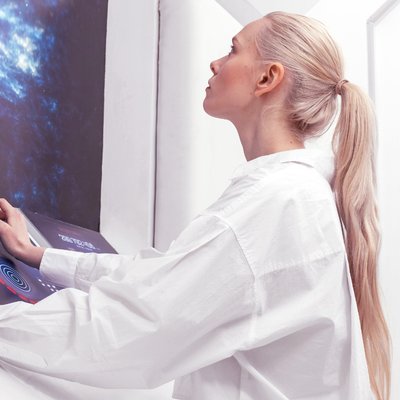While the accelerated pace of technological evolution has indeed shaped modern learning, let's delve into an exploration of unconventional and intriguing dimensions within the educational sphere.
Quantum EdTech: Quantum Leap in Learning
Quantum EdTech represents a groundbreaking intersection between quantum physics and educational technology. Unlike traditional EdTech, which primarily focuses on digital tools and platforms, Quantum EdTech leverages the principles of quantum physics to enhance the learning experience.
In Quantum EdTech, quantum computing takes center stage. Quantum computing utilizes the principles of quantum mechanics to perform calculations at unprecedented speeds. Unlike classical computers that use bits to represent either a 0 or a 1, quantum computers use quantum bits or qubits. Qubits can exist in multiple states simultaneously, allowing for parallel processing and solving complex problems much faster than classical computers.
So, why integrate quantum computing into education?
The answer lies in its potential to revolutionize problem-solving and scientific exploration. Quantum computers excel at handling intricate calculations involved in fields like chemistry, physics, and cryptography. In an educational context, students can harness the power of quantum computing to engage in real-time problem-solving and dynamic scientific exploration, providing them with a hands-on experience in cutting-edge technology.

By introducing Quantum EdTech, educators aim to prepare students for the future by familiarizing them with emerging technologies, fostering critical thinking, and enabling them to tackle complex challenges in various scientific disciplines.
This innovative approach not only expands the horizons of educational technology but also equips students with skills essential for the evolving landscape of science and technology.
Pioneering universities with robust quantum physics and computational science programs are integrating quantum computing into their curriculum. Students delve into groundbreaking research, demonstrating the transformative potential of Quantum EdTech.
AI and Robotics: Crafting Personalized Learning Journeys
AI is employed to analyze and understand the unique characteristics of each student's learning patterns. By leveraging adaptive learning algorithms, educational platforms can dynamically adjust content delivery based on the student's strengths, weaknesses, and pace of learning. This personalization ensures that students receive materials that resonate with their specific requirements, fostering a more efficient and engaging learning process.
Additionally, the integration of robotics in this context can provide interactive and hands-on experiences. Robots can serve as educational companions, guiding students through lessons and activities, and offering immediate feedback based on the individual student's progress. This combination of AI and robotics aims to create a learning environment that adapts to each student's needs, fostering a more personalized and effective educational journey.

Holography: Immersive Exploration of 3D Learning
Our exploration of transformative educational technologies brings us to the captivating realm of holography. Unlike traditional learning methods, holography offers an unparalleled level of immersion by bringing 3D models to life, transcending the limitations of conventional approaches.
In the field of holographic education, innovative solutions redefine how students interact with educational content. The integration of holographic technology provides access to a dynamic and interactive learning environment where three-dimensional objects and models come to life in real-time. This immersive experience goes beyond traditional methods, fostering a deeper level of engagement and curiosity among learners. Holography's inclusion in education signifies a paradigm shift, turning abstract concepts into tangible experiences and ushering in a dynamic era of memorable and impactful learning.
As we navigate through the less-explored dimensions of educational technology, we uncover the extraordinary potential that often eludes mainstream conversations.
By spotlighting Quantum EdTech, AI and robotics, holography, and others, we realize that the future of education is shaped by these unconventional trends. In adopting these remarkable facets, education transforms into a dynamic, interactive, and personalized journey, preparing students for the unforeseen challenges of tomorrow.












